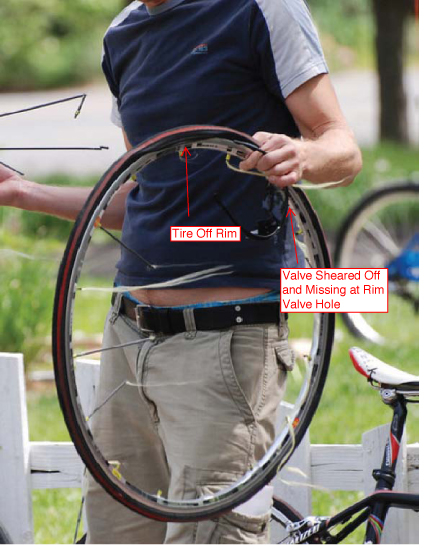Mavic Reinvents Wheel, Fails, Blames Specialized
Have you heard about those new “high tech” Mavic R-Sys wheels? They actually use carbon tubes instead of spokes! Sort of like spokes made from soda straws, only these are smaller and more fragile! And the spokes are in compression, not tension! Now I bet if you haven’t heard of them yet, you are now itching to part with $1200 for a set! Sure, tensioned wire-spoke wheels have proven themselves reliable over decades of use. And sure, the last time someone built a spoked wheel with spokes in compression, the wheel was attached to a wagon heading for the California Gold Rush. In 1849. And sure, these Mavic wheels immediately started failing and have already been recalled. No matter, French engineering has a long and illus… hmmmm….
In any case the failure issues have been remedied. Now, when a VeloNews editor is racing his bike equipped with a pair of post-recall R-Sys wheels, and one of them explodes in a corner, it is clearly no-longer the fault of these fine wheels. It is Specialized’s fault – they built the frame in question and post-crash, it had a crack in the top-tube. Just another case of a carbon frame cracking and causing the wheels to explode. Happens daily. Just like herds or Zebras regularly thunder across the plains of Wyoming.

Note that in the exciting video below. the Mavic carbon tubular spokes are shown to withstand the punishing compressive forces of one tiny French guy. Note that they work in “Tensi-ohn”, and “com-presi-ohn”. No word on whether they can handle lateral forces. So I urge you, if you ride these wheels, don’t turn. Or, at least don’t crash. Because at the very least, even if it WASN’T a wheel failure that caused the crash, the wheel disintegrated during the crash. That MIGHT be what happened. Sure, and monkeys MIGHT fly out of my butt.
Please make you own mind up here – after all, the R-Sys are 10% lighter and 30% stiffer (at least when squeezed by a miniature French engineer) and 75% more expensive. I always remember the words of one of my PhD advisors: “What’s the most parsimonious explanation here?” A fancy way of saying, when you hear the thunder of hooves, do you think zebras or horses? Which is an obtuse way of saying, “yeah right”. Kenyon’s rule of carbon engineering: big sturdy structure: carbon good. Thin fragile structures: carbon bad.
For more detail on this situation, please see the NYC Bike Snob’s blog here and here.

October 1, 2009 @ 10:51 am
Again a very interesting subject here. Mavic def. has a great and long history in the bicicle wheel industry. Engineering in France is, at least in Europe recognized as one of the best, with german one. I have no doubt that french Mavic touched the limit of the carbon use for wheels. They also have another classic spoke made of this material, the Cosmic. We have sold in our shop those R-Sys wheels, and had, indeed, problems. Not that kind of problem, but assembly problems … no accidents, but complaints about rigidity. I think they made a mistake there, but gosh … the wheel is nice. But let’s face it … we have many problems with the carbon : cracks !
Lately, I want to buy a new MTB, and I’m really thinking about not buying a CF frame, and choose or aluminium or titanium one.
But at least, we must admit Mavic is really “inovative”.